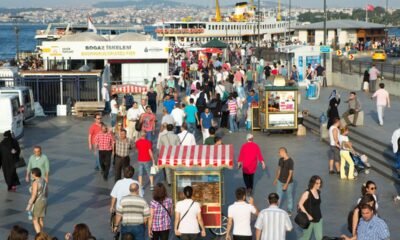Travel Guides & Articles
Radisson’s ‘India Getaway’ Campaign Targets Domestic Travelers, Offering Exclusive Benefits for Radisson Rewards Members and Driving Seasonal Tourism

Published on
August 12, 2025 |
The landscape of travel in India is evolving, with business travelers increasingly extending their work trips for leisure, and regional destinations seeing a rise in demand. Recognizing these shifts, Radisson Hotel Group has strategically launched its ‘India Getaway’ campaign to tap into these emerging trends. This exclusive campaign, which runs from August 18 to September 2, 2025, aims to drive bookings during a traditionally slower travel period and offers compelling benefits for Radisson Rewards members.
The ‘India Getaway’ campaign is designed to cater to a growing desire for quick, meaningful escapes, especially during what were once considered off-peak seasons. By providing enhanced savings, exclusive deals, and member-first benefits, Radisson is positioning itself to meet the demands of Indian travelers looking for domestic getaways.
Understanding the Growing Domestic Travel Trends in India
Recent insights from Radisson Hotel Group highlight a clear shift in domestic travel behavior in India. A growing number of business travelers are extending their work trips into leisure time, capitalizing on short breaks to explore nearby destinations. This trend is especially evident in tier-II and tier-III cities, which are driving a substantial increase in domestic travel demand. These markets, once overshadowed by major metropolitan hubs, are now emerging as key contributors to the country’s tourism economy.
The rise in domestic travel is being fueled by several factors, including increasing disposable incomes, better connectivity to regional destinations, and a desire for value-led travel experiences. The appeal of quick weekend getaways and affordable yet high-quality stays is pushing travelers to explore local destinations more than ever before.
As a result, Radisson Hotel Group has tailored its ‘India Getaway’ campaign to cater specifically to these shifts, offering promotions that appeal to both seasoned travelers and first-time visitors looking for memorable experiences in their own country.
The ‘India Getaway’ Campaign: Key Benefits and Offerings
The ‘India Getaway’ campaign is designed to incentivize domestic travel during the shoulder season, which falls between the peak summer holiday period and the Diwali travel surge. This typically slower travel window presents a unique opportunity for Radisson to engage both loyal members and new customers by offering them attractive deals on hotel stays, tours, and additional perks.
The campaign spans from August 18 to September 2, 2025, with a travel window from September 3 to December 31, 2025, ensuring that travelers can plan their escapes in advance while taking advantage of the best offers. Radisson Rewards members will benefit the most from this initiative, with exclusive savings, added value through complimentary services, and enhanced loyalty perks. Members will enjoy the following key benefits:
- Exclusive savings on room rates and packages across Radisson properties in India.
- Complimentary breakfast and early check-ins or late check-outs, providing flexibility for travelers looking for added convenience.
- Discounted access to spa services, dining, and additional amenities within the hotel properties.
- Special offers for group bookings and extended stays, catering to families, groups of friends, or corporate teams seeking a weekend retreat or extended getaway.
The campaign is perfectly timed to target those looking for short-term escapes from the everyday grind, offering not only value but also experiences that combine leisure, relaxation, and cultural discovery. Radisson aims to bring travelers closer to the vibrant cities and peaceful retreats found throughout India.
The Appeal of Domestic Travel in India: A Growing Trend
India’s domestic travel sector has seen an upward trajectory in recent years, and 2025 is poised to continue this trend. Many travelers, especially within the younger demographic, are now looking for experiences that align with their values—travel that offers more than just sightseeing but a connection with local culture and community. Domestic tourism, particularly in emerging destinations, has proven to be a sustainable option, with travelers seeking destinations that offer a balance of affordability, luxury, and cultural immersion.
Cities such as Jaipur, Udaipur, Rishikesh, and Cochin are becoming increasingly popular for both domestic and international tourists. These cities offer rich cultural histories, modern amenities, and easy access from major metropolitan areas. In addition, rural areas and smaller towns, often overlooked in favor of well-known tourist hubs, have seen a significant uptick in visitors.
Radisson Hotel Group’s ‘India Getaway’ campaign aligns perfectly with this demand, targeting these growing markets with offers that emphasize relaxation, wellness, and connection to local culture. Whether it’s a heritage hotel experience in Rajasthan or a wellness retreat by the backwaters of Kerala, Radisson is catering to every traveler’s needs.
The Impact on Regional Economies: A Boost to Local Tourism
The rise of regional travel in India is not only benefitting the tourism sector but is also providing a much-needed boost to local economies. As travelers increasingly opt for domestic getaways, small cities, rural destinations, and remote areas are experiencing a surge in both direct and indirect economic benefits.
Accommodation providers, local businesses, and tour operators are seeing increased demand, with the ‘India Getaway’ campaign providing a significant advantage. Additionally, government initiatives aimed at boosting tourism in tier-II and tier-III cities have created a supportive environment for these regions to grow and develop their tourism infrastructure.
For example, in areas where Radisson operates, such as in Chandigarh, Lucknow, and Varanasi, local suppliers and tourism-related businesses, including transportation services and craft markets, are directly benefiting from the influx of travelers. These regions are seeing higher occupancy rates in hotels and resorts, with increased patronage at local restaurants, shops, and tourist attractions, further supporting the economic uplift.
Targeting the Shoulder Season: Maximizing Value During Off-Peak Travel Periods
The shoulder season, which typically occurs between major holidays like summer and Diwali, often sees reduced travel activity. However, Radisson’s ‘India Getaway’ campaign targets this period by offering compelling reasons for travelers to book stays during traditionally quieter months.
By providing significant discounts and perks, the campaign is designed to reduce the impact of the offseason, encouraging tourists to travel during a time when destinations are less crowded and prices are more affordable. This is a win-win scenario for both travelers and the tourism industry. Guests can enjoy quieter, more personalized experiences, while local tourism businesses benefit from a steadier flow of visitors, keeping operations consistent throughout the year.
The Role of Radisson Hotel Group in India’s Domestic Travel Landscape
Radisson Hotel Group has long been a leader in the hospitality sector, known for its innovative approach to meeting the needs of global travelers. Its recent focus on enhancing domestic travel options in India through campaigns like ‘India Getaway’ illustrates the company’s adaptability and forward-thinking approach. The group’s ability to align its offerings with current travel trends, including wellness tourism and regional exploration, has positioned it as a key player in the growth of the Indian tourism market.
The success of this campaign further strengthens Radisson’s commitment to fostering a deeper connection between travelers and the diverse destinations within India. Through strategic partnerships, enhanced loyalty programs, and locally-inspired experiences, Radisson is continuously working to enhance the value of domestic travel for its customers.
The Future of Domestic Travel in India: Trends to Watch
Looking ahead, the future of domestic travel in India is full of potential. As more people seek meaningful escapes close to home, destinations like Goa, Kerala, and Rajasthan will continue to see a rise in visitors. The growth of wellness tourism, coupled with interest in eco-tourism and cultural travel, indicates that travelers are increasingly interested in immersing themselves in destinations that offer unique, restorative experiences.
Additionally, as travel patterns evolve and digital technologies make it easier to plan and book trips, the way people engage with travel brands will continue to shift. Companies that embrace seamless, tech-driven booking experiences and tailor their services to the needs of today’s travelers will be better positioned to meet the growing demand for domestic tourism.
Conclusion: Unlocking the Potential of Domestic Travel
Radisson Hotel Group’s ‘India Getaway’ campaign is more than just a marketing initiative—it is a response to the growing trend of domestic travel in India. By offering tailored experiences that appeal to a broad spectrum of travelers, the campaign is unlocking the potential of this important market and contributing to the overall growth of India’s tourism industry.
With increasing demand for short-term escapes, value-driven packages, and culturally rich experiences, the future of domestic tourism in India looks promising. As Radisson and other players in the tourism sector continue to innovate and meet the needs of travelers, the ‘India Getaway’ campaign stands as a testament to the evolving landscape of regional travel, offering a glimpse into the future of tourism in India.
Travel Guides & Articles
GST hike to make premium air travel costlier

The Goods and Services Tax Council has raised the levy on non-economy air travel from 12% to 18%, a move experts believe will drive up fares for passengers travelling in premium economy (PE), business and first class.
While the rate for economy travel stays unchanged to keep airfares affordable for mass travellers, the steeper GST on upper classes has triggered concern among airlines and online travel agents. Prior to the Council announcing the new tax regime on Wednesday, two major airlines requested for GST on all classes to be brought to 5%, three government officials confirmed to HT.
Former president of Travel Agents Federation of India (TAFI) Ajay Prakash said the new GST rate has come at a time when the Indian aviation market is going through a “very sensitive phase”.
“Increasing the GST for upper class fliers directly means airfares for all the three classes will shoot up,” he said. “While the government claims to promote Indian aviation by bringing in big aircraft, etc., levying higher GST is only going to discourage individual fliers to book on non-economy classes.”
Jitin Makkar, senior vice president and group head of corporate sector ratings in ICRA Limited, noted the additional levy will be passed on to the consumers.
An airline insider requesting anonymity said that the increase is no revolution but it is enough to make airlines rethink budgets and booking strategies. “Let alone the Air India crash (June 12 disaster that claimed 260 lives) that shook passenger confidence, Indian airlines are facing major troubles due to the ongoing Pakistan airspace closure leading to more flying time and increased airfares. At such a time, it was needed that the sector be allowed to remain untouched,” the official said.
A former airline official echoed similar views, saying, “India has only two major airlines now –– while one is trying to regain passenger trust while facing a loss of ₹5,000 crore due to Pakistan closing its airspace, the other (IndiGo) has just entered into the segment and launched its business product.”
Sheldon Hee, regional vice president, Asia Pacific, International Air Transport Association (IATA) termed the move “disappointing”. IATA is a global trade association of airlines, representing around 300 airlines or about 80% of worldwide air traffic and acts as a global voice of the airlines.
“In many ways, India has been an amazing aviation story with its impressive growth, record aircraft orders, and world class infrastructure. Aviation has tremendous potential to contribute to India’s economic growth, both directly as Indian airlines grow, and indirectly through increased connectivity for travellers and businesses alike. It is, therefore, disappointing to hear of a decision to increase the GST on non-economy travel with no clear justification,” Hee said.
“This increase runs counter to the efforts of Indian carriers, which have been investing in their premium products to enhance the travel experience on their flights. Tax on non-economy air travel has risen dramatically –– GST is at 18% after yesterday’s announcement, compared to the 8.6% rate in 2017 under the service tax regime.”
Hee also said that for its aviation industry to thrive, India needs to take a whole of government approach in considering broader policy and consider the risks of such policies on dampening demand and undermining profitability in order for its aviation industry to thrive.
“Asia Pacific airlines are forecast to only earn $2.60 per passenger in 2025. Taxing premium travellers, where these customers often make a difference to a route’s viability, is counterproductive,” he added.
Makkar, however, said that the increase should not have a significant impact on the business class segment considering this segment’s low price elasticity, though there could be some amount of downtrading to the economy segment.
“By keeping rates stable for economy travellers, this measure is likely to ensure continued affordability, thus making air travel more accessible,” he concluded.
Travel Guides & Articles
Industry’s finest to be recognised at the India Travel Awards on 9 September in Delhi – Tourism Breaking News

Travel Guides & Articles
Festive travel packages by Thomas Cook India and SOTC Travel

Traditionally, Indian festivals have been celebrated at home or in ancestral houses, with families gathering under one roof. Recently, Indian consumers have also been choosing to travel and celebrate festivals with multi-generational family units and friends.
Thomas Cook India and SOTC Travel’s India Holiday Report 2025 highlights this shift in consumer behaviour, with demand for longer festive breaks, higher holiday spends and interest in experiences ranging from heritage and luxury stays to cruises and new destinations.
To tap into this growing festival travel trend, Thomas Cook (India) Limited, an omnichannel travel services company, and its Group Company, SOTC Travel, have introduced a specially curated range of holidays for the upcoming festive season, featuring special group tour departures from Kolkata for Durga Puja and Karnataka for Dussehra, as well as from high-potential markets of Gujarat and Maharashtra. In addition, the companies have also announced special Diwali departures across key pan-India markets.
The companies have also announced a special offer: discounts of up to Rs.10000 per transaction across select holidays via HDFC credit cards.
Festive tourism trends
Longer stays and increased spends: From the traditional 3 days Indians are now extending their stays to 6-12 days (multi-generational families combining school vacations like Dussehra, Durga Puja and Diwali). Young India’s millennials/GenZ and working professionals are embracing extended trips, combining weekends with festival holidays for a 5-6 day break
Favourite destinations:
-
Domestic & Indian Subcontinent: Andaman, Kerala, Kashmir, Himachal Pradesh, Rajasthan, Goa, Karnataka, North East, Sri Lanka, Bhutan and Nepal
-
International: Thailand, Singapore with Bintan, Malaysia, Sabah, Indonesia, Vietnam, Oman, Australia-New Zealand, Switzerland, France, Finland, Japan, Georgia, Germany, Spain, Austria, Kenya, South Africa, Dubai, Abu Dhabi, Maldives, Mauritius, South Korea
-
Visa-Free, Visa-on-arrival and easy-visa destinations in demand: Thailand, Malaysia, Philippines, Sri Lanka, Nepal, Bhutan; Dubai-Abu Dhabi, Indonesia, Maldives
- Spiritual Journeys: Leveraging festive sentiment, Thomas Cook and SOTC have curated spiritual journeys through their Spiritual Journeys & Darshans portfolio – featuring Char Dham, Kashi, Ayodhya, Rameswaram, Tirupati, Amritsar, Varanasi, Prayagraj, Dwarka and Sri Lanka with special themed tours such as ‘Ramayan Anant Yatra’ and ‘Ramayan Trails’
- Premium/affordable luxury travel: Customers are opting for luxury resorts and spas, with destinations like France, Switzerland, Scandinavia, South Korea, Japan, Singapore, Australia, New Zealand, Oman, Morocco, Seychelles
- Cruising: Strong interest for sailings across South East Asia and the Middle East (Costa Cruises, Resorts World Cruises); premium sailings like Disney Cruise Line in Australia and Singapore; domestic (Cordelia)
- Festival regional group tours: The companies are witnessing strong interest in their regional tours: Adhbhut Asia, Alokik Asia, Ashadharon Vietnam, Duronto Dubai O Abu Dhabi, Akorshonio France O Swiss with departures accompanied by regional tour managers; on-tour puja and curated vegetarian meals on select tours
Rajeev Kale, President & Country Head, Holidays, MICE, Visa – Thomas Cook (India) Limited said, “Travel has become non-negotiable and festive tourism serves as a cultural driver. We are witnessing a strong and exciting trend—Indians are no longer staying at home but increasingly choosing to celebrate festivals while travelling. This is reiterated in our India Holiday Report 2025 that also reveals a strong shift—85% of Indians are increasing their travel frequency and budgets, driven by a desire to celebrate culture in immersive, meaningful ways.
Hence, to maximise this opportunity we have launched innovative festive regional groups tours like Adhbhut Asia, Alokik Asia, Ashadharon Vietnam, combining local and authentic experiences to meet the aspirations of India’s new-age travellers.”
S.D. Nandakumar, President & Country Head – Holidays and Corporate Tours, SOTC Travel Limited said, “India’s festive calendar is fast emerging as a travel driver. Families and friends are increasingly using these breaks to create multiple holidays rather than a single long annual holiday. Significantly, this trend is not restricted to customers from metro cities, but also from India’s tier 2 and 3 markets, reflecting a strong, nationwide aspiration to travel. Travellers are also embracing new formats—cruise holidays, boutique and heritage stays, luxury villas and immersive experiences like culinary trails and adventure activities. At SOTC, we have designed our festive portfolio to blend celebration with exploration—curating domestic and international tours that allow Indians to experience their festivals in unique settings, while creating deeper connections and lasting memories.”
-

 Business6 days ago
Business6 days agoThe Guardian view on Trump and the Fed: independence is no substitute for accountability | Editorial
-
Tools & Platforms3 weeks ago
Building Trust in Military AI Starts with Opening the Black Box – War on the Rocks
-

 Ethics & Policy1 month ago
Ethics & Policy1 month agoSDAIA Supports Saudi Arabia’s Leadership in Shaping Global AI Ethics, Policy, and Research – وكالة الأنباء السعودية
-

 Events & Conferences4 months ago
Events & Conferences4 months agoJourney to 1000 models: Scaling Instagram’s recommendation system
-

 Jobs & Careers2 months ago
Jobs & Careers2 months agoMumbai-based Perplexity Alternative Has 60k+ Users Without Funding
-

 Education2 months ago
Education2 months agoVEX Robotics launches AI-powered classroom robotics system
-

 Funding & Business2 months ago
Funding & Business2 months agoKayak and Expedia race to build AI travel agents that turn social posts into itineraries
-

 Podcasts & Talks2 months ago
Podcasts & Talks2 months agoHappy 4th of July! 🎆 Made with Veo 3 in Gemini
-

 Podcasts & Talks2 months ago
Podcasts & Talks2 months agoOpenAI 🤝 @teamganassi
-

 Education2 months ago
Education2 months agoMacron says UK and France have duty to tackle illegal migration ‘with humanity, solidarity and firmness’ – UK politics live | Politics





















